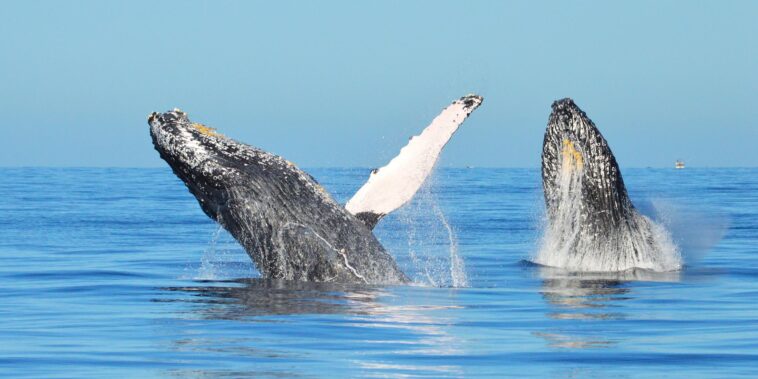From the majestic gray whales that make their annual migration along the Pacific coast, to the playful humpbacks that can be seen breaching and tail-slapping in the waters around Cabo San Lucas, there is no shortage of whale-watching opportunities for nature lovers. We’ve put together this guide to the different whale species in Cabo San Lucas, to help you identify each one and better understand their behavior and migration patterns.
Experience these creatures up close in your own private catamaran in Cabo by La Isla Tour.
1. Gray Whale
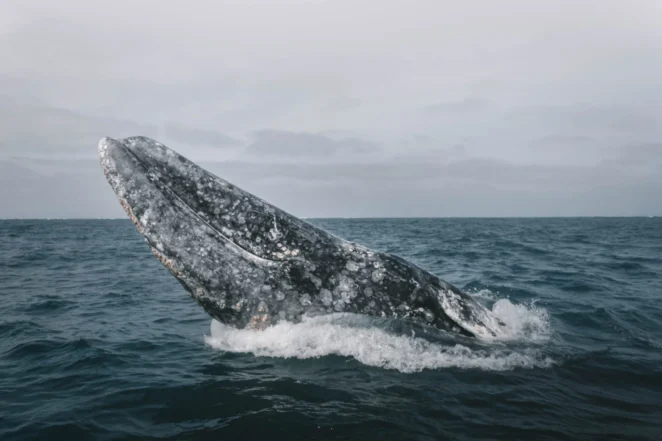
The gray whale, also known as Eschrichtius robustus, is one of the most commonly sighted whales in Cabo San Lucas. These gentle giants are easily recognizable thanks to their mottled skin and distinctive heart-shaped blow. Adults can reach lengths of up to 50 feet and weigh up to 40 tons, making them one of the larger whale species. It is known for its long migrations, with individuals traveling up to 12,000 miles between their feeding grounds in the Arctic and their mating and calving grounds in the warm waters of Baja California
2. Humpback Whale
Known for their long migrations and their impressive acrobatic displays, Humpback Whales are a favorite among tourists and whale watchers. They are distinguishable by their large size, with adults reaching up to 52 feet in length and weighing up to 40 tons. Humpback Whales are also known for their iconic hump that appears when they arch their back before diving into the water. Their diet consists mainly of krill and small fish, and they are often seen bubble-net feeding, a group feeding technique that involves coordinating bubbles to trap prey.
3. Blue Whale
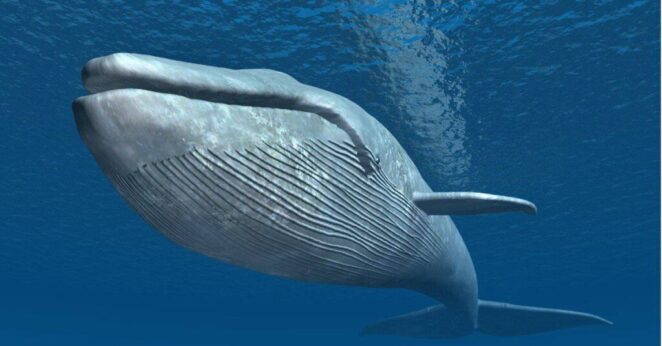
The Blue Whale, also known as Balaenoptera musculus, is the largest mammal on earth and is found in the waters near Cabo San Lucas. This magnificent creature can grow up to 100 feet in length and weigh as much as 200 tons. They have a distinctive blue-gray coloration and are easily recognized by their broad, mottled dorsal fin and small, curved pectoral fins. Despite their massive size, these gentle giants feed exclusively on tiny krill, using special filters called baleen plates to strain millions of these small crustaceans from the water.
4. Sperm Whale
The Sperm Whale, or Physeter macrocephalus, is one of the larger species of toothed whales and is found in the waters of Cabo San Lucas. They are known for their distinctive square-shaped head, which is one-third the length of their body and contains the largest brain of any animal on earth. They are also famous for their ability to dive to great depths, with some individuals recorded to have dived as deep as 2,250 meters. They are often seen in groups, or pods, of 15-20 individuals, but can also be solitary.
5. Fin Whale
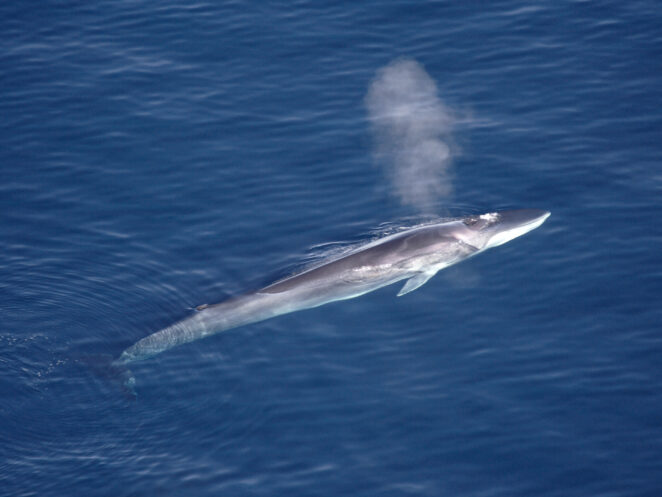
The Fin Whale, scientifically known as Balaenoptera physalus, is one of the largest marine mammals in existence, reaching lengths of up to 85 feet and weighing up to 74 tons. They are long, slender animals, with a distinct V-shaped head and streamlined body that allows them to move at incredible speeds. The Fin Whale is often referred to as the “greyhound of the sea” due to its remarkable speed, which can reach up to 20 miles per hour. In Cabo San Lucas, these mammals are found mainly in the winter months, from December to April, as they migrate to the warmer waters of the Pacific to mate and give birth.
6. Bryde’s Whale
Bryde’s whales, pronounced “broo-dus,” are baleen whales that can be found in warm and temperate waters around the world, including Cabo San Lucas. They are typically between 11-15 meters (36-49 feet) long and weigh approximately 13-25 metric tons. Bryde’s whales have a streamlined body shape, which allows them to move quickly through the water in search of their prey.
These mammals are known to be active swimmers, and they often swim close to the surface, which makes them easier to spot by whale watchers. They feed on small fish and plankton, which they filter through their baleen plates. Bryde’s whales are typically solitary animals, but they have been known to form small groups on occasion.
Despite being found in many parts of the world, not much is known about the population of Bryde’s whales. They face threats from human activities such as pollution, overfishing, and vessel strikes. Conservation efforts are being made to protect these magnificent creatures, but more research is needed to fully understand their population size and behavior patterns.
7. Pilot Whales
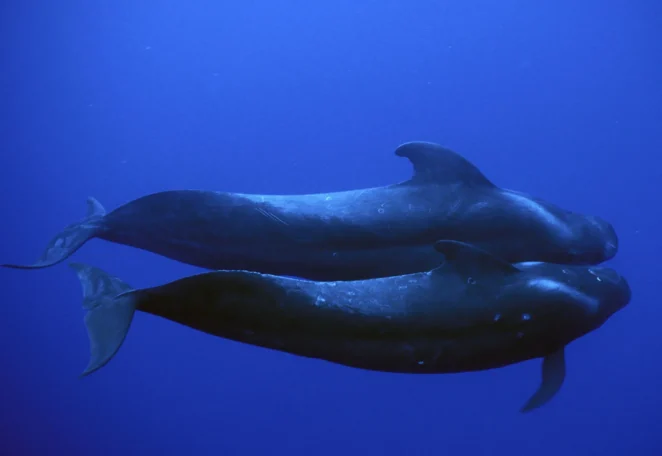
Pilot whales are a species of toothed mammals that are found in oceans around the world, including in Cabo San Lucas. They are part of the dolphin family and can grow up to 6 meters (20 feet) in length and weigh up to 3,000 kg (6,600 lbs). Pilot whales are social animals and often travel in groups of up to 50 individuals. They are known for their unique vocalizations, which they use to communicate with each other. Unfortunately, these mammals are also vulnerable to human activities such as hunting, pollution, and entanglement in fishing gear. Conservation efforts are being made to protect pilot whales and their habitats.
To sum up, a visit to Cabo San Lucas provides an excellent opportunity to spot various whale species in their natural habitat. Understanding the different characteristics, habits, and behaviors of each species ensures a better appreciation of these majestic creatures. The gray, humpback, blue, and fin whales are some of the most popular species seen in the region, while orcas and sperm whales are also occasionally spotted. A whale-watching expedition in Cabo San Lucas is an unforgettable experience that emphasizes the importance of preserving our planet’s biodiversity.



